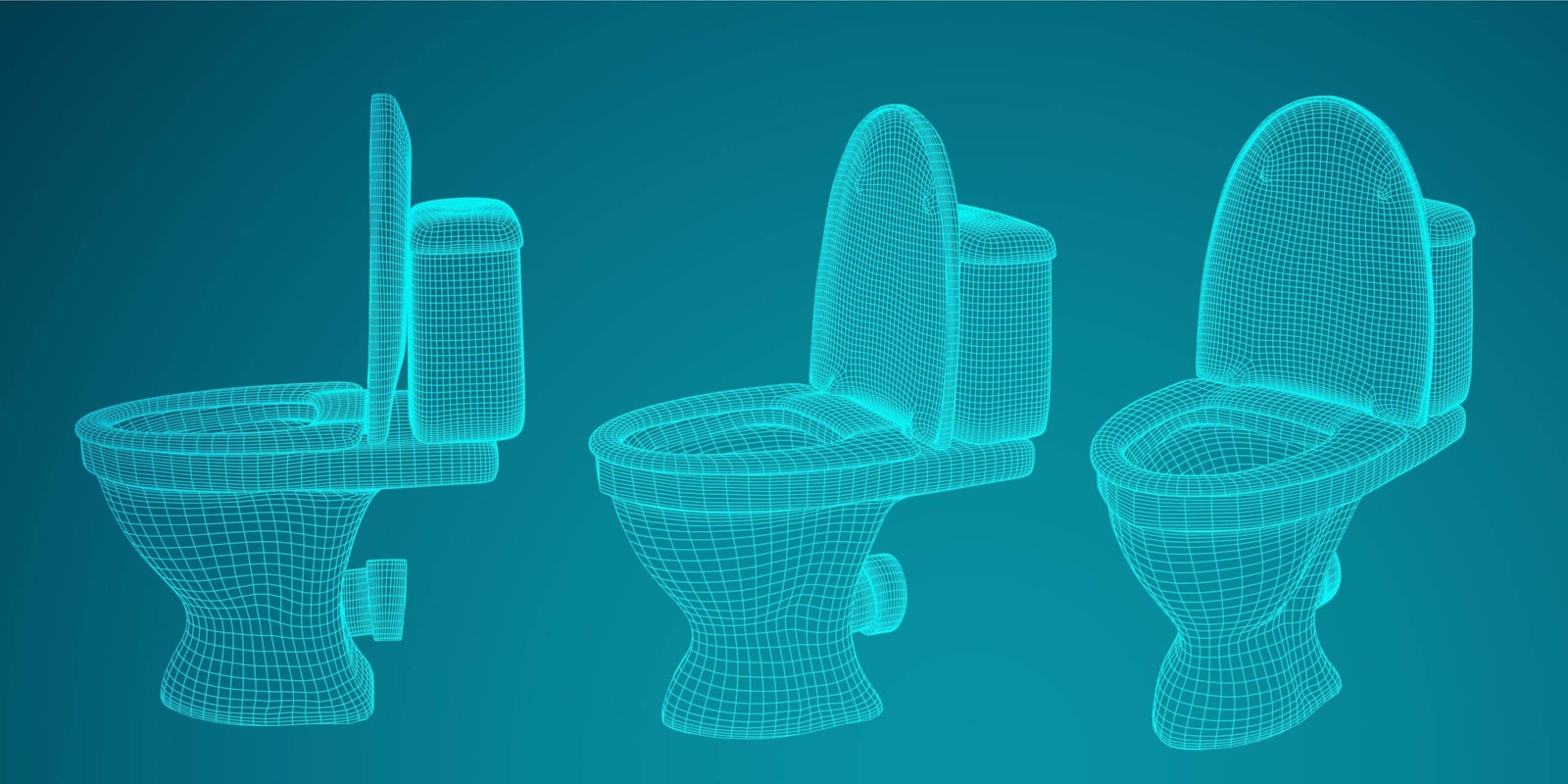Concerns have been raised about the civil liberties implications of facial recognition—but you probably haven’t thought much about a very different part of your body being scanned.
A smart toilet has been developed by a lab at Stanford University that scans a person’s bowel movements to detect diseases and uses the anus to identify you. Behold: butthole recognition.
In a news release, Stanford Medicine announced that the lab of Sanjir Gambhir, MD Ph.D. created a device that can be affixed to a regular toilet that can detect disease markers in stools and urine using different medical tests.
That data can then be sent to the cloud for analysis and could be sent to a health care provider for record-keeping.
However, the toilet also has a system to scan fingerprints on the flush handle and a camera that identifies people by their anus—to make sure the data is for a specific person using the toilet and not, for instance, another family member.
“We know it seems weird, but as it turns out, your anal print is unique,” Gambhir said in the news release.
Dr. Seung-min Park, a co-author of a paper about the smart toilet published in the journal Nature on Monday, noted in a blog post that anal prints are “not a new concept.” Painter Salvador Dali figured out that a person’s anus had 35 or 37 unique creases.
Park also explained that the photos taken by the toilet would be stored securely.
“We understand the privacy concerns of our approach seriously from its inception,” Park wrote in the blog post. “Our proof-of-concept study utilizes photo-imagery of a person’s anus, which may be non-traditional and unusual compared to fingerprints. We unconditionally ensure the security of all photos and private information of our users are enforced through end-to-end encrypted data transmission.”
READ MORE:
- This group scanned thousands of faces in Congress to protest facial recognition
- College students are leading the fight against facial recognition
- What is biometric data?
- Can a lawsuit in Illinois stop a dangerous new facial recognition app?


